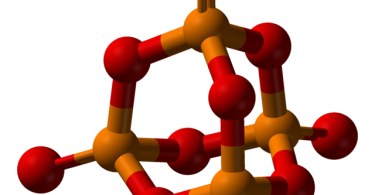Homoeopathic physicians, as all others, should recognize and encourage their patients’ capacity for ethical striving and their freedom which enables them to take responsibility, to make decisions and to fulfill their obligations towards themselves and towards others. This follows from the existential view. Furthermore, homoeopathic physicians, as all others, should recognize the inner worlds in which their patients live and meet them in these worlds, adopting the phenomenological method of Edmund Husserl who chose the data of consciousness as the basis of his philosophy.
The existential-phenomenological point of view differs fundamentally from the scientific standpoint; for the latter presupposes determinism and objectivity, whereas the former presupposes freedom and subjectivity. Homoeopathic science is no exception. Although it takes into account the patient’s subjective world, it relates it to an objective drug picture, thus seeing in the individual human being a type. The patient is treated deterministically and objectively also as a bearer of the vital force which is thought to be stimulated by the potentized remedy. Homoeopathic physicians, concerned about their patients’ emotional states,can be enlightened by existential philosophers.
The existentialist expresses in his writings the predicament of modern man
whose values have become problematic and who is therefore in danger of losing faith in himself and in others. Such a person feels desperate and is unable to communicate with others. Examples can be found in the dramas and novels of Jean-Paul Sartre and in Heidegger’s picture of man in his Being and Time.
Existential psychotherapy tries to help people sickened by their predicament,
it assists them in their search for a new existence and for meeting the fellow human being. Communication with the doctor offers the patient the chance of a human relationship. Treatment in small groups, in the community of a Social Therapeutic Club or a hospital enables patients to help each other. Existential psychotherapy also uses certain techniques. It interprets a patient’s dream or a painting for instance in terms of his life situation, thus illuminating his struggle for authenticity. To gain his freedom, a person must be released from tension. The therapist can use various methods of relaxation including hypnosis. In a relaxed state the patient can be confronted with his problems by the suggestion that he is looking at a stage. In fact he is playing out the drama of his life, appearing as one of the actors, the others being the people who are of importance to him, his parents, relatives, the doctor, etc. There are also symbolic figures frequently present who depict his attitudes, wishes and fears. The doctor is the producer, but he must be careful to give the patient the full measure of his freedom and not to impose his own ideas on him.
Those who cannot relax without the use of drugs can be treated with the aid of intravenous injections of sodium amytal (grs 3i) and methedrin (30 mg). This technique enables people to discuss their problems freely with the doctor and to face them.
If the personality is strong, lysergic acid (50-200 gammas and more) combined with methedrine (15 mg) and ritalin (given intravenously in a dose of 25 mg) offers the greatest possibilities for existential psychotherapy. There is a reliving of the past, of many traumatic situations, a facing of nothingness and the opening up of new vistas through communication with the therapist.
Homoeopathic medicine can be of help in the existential struggle. Not only can the remedy steady the patient in his anxiety, but it can also assist him in his striving for a new existence. Drug pictures can be interpreted in existential- phenomenological terms. The Ambra grisea patient for instance is a person who has been made dizzy and confused by life and who has escaped into a world of dreams away from reality. Ambra qrisea can assist him to accept the challenge of his existence and to cope with it. Anacardium refers to a different sort of ethical conflict. In the words of C. E. Wheeler and J. D. Kenyon “it appears as though symbols emanating from the unconscious continue to reach the conscious mind until a sense of dual personality is established, a feeling of two wills, usually contending.”! The two authors describe the contest as follows: “He (the patient) is readily cowed. The oaths (an expression of his bad temper and annoyance) are
of the nature of a camouflage for a deep sense of inferiority. Indeed Anacardium in potency is used to restore courage which is failing in anticipation of some ordeal.” (2) should now like to illustrate the combination of the existential- phenomenological approach and Homoeopathy by quoting two patients.
The first patient is a man who had been suffering from duodenal ulcer for
years; previous treatments had failed to relieve his attacks of vomiting and
epigastric pain. The first step was to discover his problem. Therefore he did not receive any homoeopathic medicine immediately, but was treated with the drama technique. After several months the repeated appearance of a certain woman colleague pointed to the nature of his conflict. He described her as “warm-hearted” and “understanding”. When questioned about his wife, he realized that she had appeared to him as lacking in feeling. (He was a painter and admitted that the lack of love from his wife had also affected his art.) He faced his disappointment and was now encouraged to discover the woman for whom he had longed in his wife. There was a response and new possibilities opened up before him through his own efforts. At that point Coffea cruda 30 was prescribed to enable this highly sensitive man who had not found sufficient rest by day or night to conserve his energies. His ulcer pain got better and his vomiting stopped. He had, however, not been treated for his “disease”, but had been given a chance to understand himself and to realize his freedom. The “disease” was interpreted as a manifestation of his conflict and the homoeopathic medicine was given as an aid in his struggle for a better relationship with his wife and with himself.
The second patient is a girl who started treatment at the age of 19. For the
past two years she had been afraid to lead a normal life for fear of losing control over her bladder. Another doctor, a psychiatrist, had failed to help her. She saw that she was wasting her life, and the drama technique only underlined this fact without providing her with any further insight or with relief from her phobia. She realized that she was lacking courage to grow up which was partly due to the fact that she had lost her mother when she was 15 years old. The father and the stepmother were interviewed and every effort made to give her confidence, but a radical change in her attitude occurred only when she saw her situation under the influence of lysergic acid. She then discovered that her fear was not of losing control over her bladder but over her sexual urge. Passing urine did not in fact relieve her, as she was sexually excited. She became a ware of the fact that the frightening sexual feeling had been transferred to the bladder. Facing sexuality is part of facing adulthood. She accepted this challenge and from that time on her
fear of wetting herself has diminished so that she has been able to start a career and to meet young men. Her “cure” has been helped by a few doses of Staphysaqria 30 which was prescribed because of its beneficial effect on urinary and genital disturbances and because of the relief which it brings to people who have been suffering from a suppression of their feelings.
The two cases demonstrate how existential psychotherapy can be combined
with homeeopathic medicine. The therapist trusts his patient’s ethical will, his
determination to face his situation and to cope with it. The treatment consists in helping a person to gain insight and strength for his task; his subjective world of experience becomes the meeting ground with his doctor. Certain techniques may be used in the treatment. The homoeopathic medicine can assist the patient in his struggle for self hood and in his efforts to make relationships with others. Thus science, homoeopathic and allopathic, is subordinated to ethics.
REFERENCES AND BIBLIOGRAPHY
1 Wheeler, C. E., and Kenyon, J. D., “A Study of Anacardiurn orientale“, B.H.J., 30,122′ .Jan- Apr. 1940.
2 ibid., p. 123.
Ledermann,E. K., “Body, mind and spirit”, B.H.J., 50, No.4, October 1961
“Clinical Applications of Existential Psychotherapy”, J. of Existential
Psychotherapy, vol. III, No.9, Summer. Fall. 1962
“Existentialism and Psychiatry”, The J. of Mental Science, 108, No.
544, July 1962
“Existential Psychotherapy and the Principles of Scientific Medicine”,
6th Intern. Congr. of Psychotherapy, Selected Papers I, Acta Psudio-
therapeutica. 1965
Medicine and Philosophy, being published by Tavistock Publications,
London. 1966.
Author: E. K. LEDERMANN, M.D., F.F.HOM.
A paper read at the Triennial Congress of the International Homceopathic League, London, July 1965.
Source: The British Homoeopathic Journal, January 1966.





